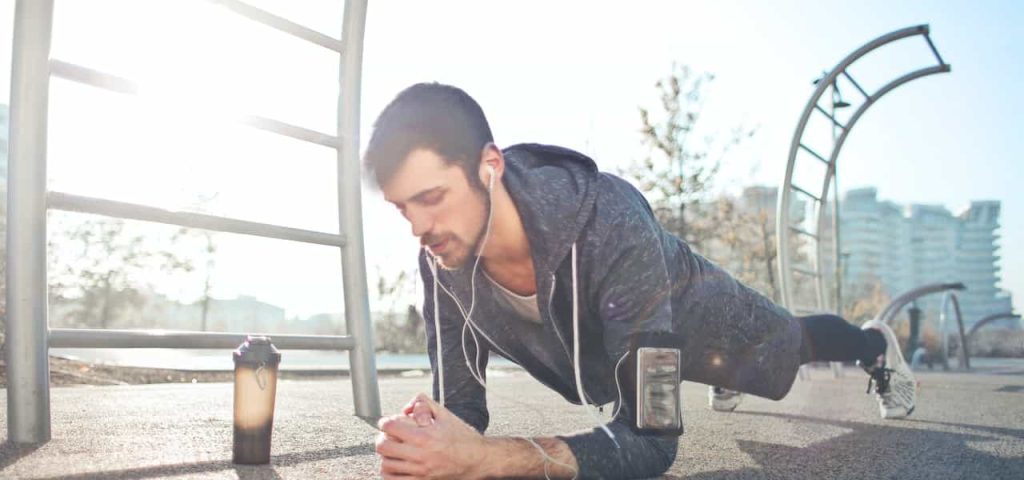Here is your complete guide to how can i get abs faster.
Introduction to How Can I Get Abs Faster
Having a six-pack is a desirable physical attribute for many people. However, getting there can be a challenge, especially if you don’t know where to start. Fortunately, there are some strategies you can use to get abs faster. In this article, we’ll cover everything you need to know to achieve a six-pack, including nutrition, exercise, cardio, rest and recovery, supplements, and common mistakes to avoid.
Understanding the Anatomy of the Abs
Before we dive into the specifics of how to get abs, let’s take a moment to understand the anatomy of the abs. The abs, or abdominal muscles, consist of several different muscles. The most prominent ones are the rectus abdominis, which runs down the middle of the abdomen, and the external and internal obliques, which run along the sides of the abdomen.
To achieve a six-pack, you need to target all of these muscles. This can be done through a combination of exercises that work the abs from different angles.
Nutrition for Abs
When it comes to getting abs, nutrition is just as important as exercise. Without a proper diet, your abs won’t show, no matter how much you work out. To get a six-pack, you need to eat a balanced diet that is rich in protein, healthy fats, and complex carbohydrates.
Protein is essential for muscle growth and repair. To build muscle, you need to eat enough protein to support your workouts. Good sources of protein include chicken, fish, lean beef, eggs, and dairy products.
Healthy fats are also important for muscle growth and overall health. Good sources of healthy fats include nuts, seeds, avocado, and olive oil.
Complex carbohydrates provide your body with the energy it needs to fuel your workouts. Good sources of complex carbohydrates include fruits, vegetables, and whole grains.

Exercise for Abs
Now that you understand the importance of nutrition, let’s move on to exercise. To get abs faster, you need to do exercises that target all of the muscles in your abs. Here are some of the best exercises for building a six-pack:
Crunches
Crunches are a classic ab exercise that targets the rectus abdominis. To do a crunch, lie on your back with your knees bent and your feet flat on the floor. Place your hands behind your head and lift your shoulders off the ground, curling your upper body towards your knees. Lower your shoulders back down to the ground and repeat.

Bicycle Crunches
Bicycle crunches work the rectus abdominis, external obliques, and internal obliques. To do a bicycle crunch, lie on your back with your hands behind your head and your knees bent. Lift your shoulders off the ground and bring your right elbow towards your left knee, while straightening your right leg. Repeat on the other side.

Planks
Planks are a great exercise for building overall core strength. To do a plank, get into a push-up position, but instead of lowering yourself down, hold yourself up in a straight line from your head to your heels. Hold this position for as long as you can.

Side Planks
Side planks target the obliques. To do a side plank, lie on your side with your feet together and your elbow directly under your shoulder. Lift your hips off the ground so that your body forms a straight line from your head to your feet. Hold this position for as long as you can, then repeat on the other side.

Cardio for Abs
In addition to exercise, cardio is also important for getting abs. Cardio helps to burn fat, which will make your abs more visible. Here are some of the best types of cardio for getting a six-pack:
High-Intensity Interval Training (HIIT) HIIT involves short bursts of high-intensity exercise followed by periods of rest. HIIT has been shown to be more effective at burning fat than steady-state cardio. Some examples of HIIT exercises include sprints, jumping jacks, and burpees.- Running Running is a great way to burn fat and improve cardiovascular health. It’s also an easy exercise to do anywhere. To get the most out of running, try to vary the intensity and incline of your runs.
- Cycling Cycling is another great way to burn fat and improve cardiovascular health. It’s also low-impact, which makes it a good choice for people with joint pain. To get the most out of cycling, try to vary the intensity and resistance of your rides.

Rest and Recovery for Abs: How Can I Get Abs Faster?
Rest and recovery are just as important as exercise and nutrition when it comes to building abs. Your muscles need time to repair and grow after each workout. Here are some tips for incorporating rest and recovery into your routine:
- Take rest days Make sure to take at least one rest day per week to allow your muscles to recover.
- Stretch Stretching after your workouts can help to reduce soreness and improve flexibility.
- Get enough sleep Sleep is essential for muscle recovery and overall health. Make sure to get at least 7-8 hours of sleep per night.
Supplements for Abs
While supplements are not necessary for getting abs, they can be helpful in supporting muscle growth and recovery. Here are some supplements that may be beneficial for building a six-pack:
- Protein powder Protein powder can be a convenient way to get extra protein in your diet, which is essential for muscle growth.
- Creatine Creatine is a supplement that has been shown to increase muscle strength and size.
- Fish oil Fish oil is a good source of omega-3 fatty acids, which can help to reduce inflammation and improve overall health.
Common Mistakes to Avoid
When it comes to getting abs, there are some common mistakes that people make. Here are a few to avoid:
- Doing too much cardio While cardio is important for burning fat, too much can actually hinder muscle growth. Make sure to balance your cardio with strength training.
- Not eating enough To build muscle, you need to eat enough calories to support your workouts. Make sure to eat enough protein, healthy fats, and complex carbohydrates.
- Neglecting rest and recovery Rest and recovery are essential for muscle growth. Make sure to take rest days and prioritize sleep.
Here’s an example table about the best diet types for getting abs faster:
| Diet Type | Description | Pros | Cons |
|---|---|---|---|
| High-protein diet | A diet that focuses on consuming high amounts of protein to support muscle growth and repair. | Can help build and preserve muscle mass, increases feelings of fullness and satiety, supports fat loss. | Can be expensive, may require increased water intake, may cause digestive issues if not balanced with enough fiber and healthy fats. |
| Low-carb diet | A diet that restricts carbohydrate intake in favor of protein and healthy fats. | Can promote fat loss, reduces water retention and bloating, supports stable blood sugar levels. | May cause low energy levels and mood swings, may be difficult to sustain for some individuals, may require increased intake of vitamins and minerals. |
| Mediterranean diet | A diet that emphasizes whole, unprocessed foods such as fruits, vegetables, whole grains, and healthy fats. | Supports overall health and longevity, may reduce inflammation, supports healthy weight management. | May require more meal planning and preparation, may be difficult to adhere to for some individuals. |
| Plant-based diet | A diet that focuses on consuming plant-based foods such as fruits, vegetables, whole grains, and legumes. | May promote weight loss and reduce inflammation, supports overall health and longevity, reduces risk of chronic disease. | May require careful planning to ensure adequate protein and nutrient intake, may be difficult to adhere to for some individuals, may be more expensive. |
Note: This is just an example table and there are many other diet types and variations that may be effective for getting abs faster. It’s important to find a diet that works for your individual needs and preferences.
Read More About How to Build Muscle After 50.
FAQs about How Can I Get Abs Faster
What is the fastest way to get abs?
The fastest way to get abs is through a combination of strength training, cardio exercise, and a healthy diet. Focusing on compound exercises that work multiple muscle groups, such as squats and deadlifts, can help to build overall muscle mass and increase calorie burn.
Additionally, incorporating high-intensity interval training (HIIT) and steady-state cardio can help to burn fat and reveal your abs. Eating a diet that is high in protein, healthy fats, and complex carbohydrates can help to support muscle growth and fat loss.
Read More About Olive Oil is Good for Your Hair.
How long does it take to get abs?
The amount of time it takes to get abs varies from person to person and depends on factors such as genetics, starting body composition, and the consistency and intensity of your workouts and diet. Generally, it can take several months to a year to achieve visible abs. However, it’s important to remember that building abs is a gradual process and requires patience and dedication.
What is a Burpee? The Ultimate Guide to this High-Intensity Exercise
Can you get abs in 30 days?
While it’s possible to make progress towards getting abs in 30 days, it’s unlikely that you will achieve visible abs in such a short amount of time. Building a six-pack requires a combination of building muscle and burning fat, which can take several months of consistent effort. However, incorporating a healthy diet, strength training, and cardio exercise into your routine can help you make progress towards your goal.
Read More About The Surprising Health Benefits of Mangoes.
How to get abs in 2 weeks?
Getting visible abs in just two weeks is not realistic. Building a six-pack requires a combination of building muscle and burning fat, which takes time and consistency. However, you can make progress towards your goal in two weeks by incorporating a healthy diet, strength training, and cardio exercise into your routine.
Focus on compound exercises that work multiple muscle groups, such as squats and deadlifts, and incorporate high-intensity interval training (HIIT) and steady-state cardio to burn fat. Remember, building abs takes time and dedication, so be patient and consistent with your efforts.
Read More About The Nutritional Benefits of Eating Dates.
Conclusion
Getting abs faster is possible with the right combination of nutrition, exercise, cardio, rest and recovery, and supplements. By following the tips outlined in this article, you can achieve a six-pack and improve your overall health and fitness. Remember, building abs takes time and dedication, so be patient and consistent with your workouts and diet.

